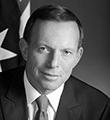The landmark China-Australia Free Trade Agreement (ChAFTA) will unlock substantial new benefits for Australians for years to come.
ChAFTA will add billions to the economy, create jobs and drive higher living standards for Australians.
Australian businesses will have unprecedented access to the world’s second largest economy. It greatly enhances our competitive position in key areas such as agriculture, resources and energy, manufacturing exports, services and investment.
Building on trade deals already concluded with Korea and Japan, ChAFTA forms part of a powerful trifecta of agreements with Australia’s three largest export markets that account for more than 61 per cent of our exports of goods.
More than 85 per cent of Australian goods exports will be tariff free upon entry into force, rising to 93 per cent in four years. Some of these goods are currently subject to tariffs of up to 40 per cent.
On full implementation of ChAFTA, 95 per cent of Australian goods exports to China will be tariff free.
Australian households and businesses will also reap the benefits of cheaper goods and components from China such as vehicles, household goods, electronics and clothing, placing downward pressure on the cost of living and the cost of doing business.
Significantly, tariffs will be abolished for Australia’s $13 billion dairy industry. Australia’s beef and sheep farmers will also gain from the abolition of tariffs ranging from 12-25 per cent and all tariffs on Australian horticulture will be eliminated.
Tariffs on Australian wine of 14 to 30 per cent will go within four years, while restrictive tariffs on a wide range of seafood, including abalone, rock lobster, and southern bluefin tuna will also cease within four years.
Tariffs will also be removed on a range of Australian resources and energy products, including the eight per cent tariff on aluminium oxide on the first day of the Agreement, benefitting our exports worth around $1.3 billion a year. The tariffs on coking coal will be removed on day one, with the tariff on thermal coal phasing out over two years.
Tariffs will be also eliminated on a wide range of Australian manufactured goods, including pharmaceutical products and car engines.
The Australian Government has secured the best ever market access provided to a foreign country by China on services, with enormous scope to build on an export market already worth $7 billion.
Legal services, financial services, education, telecommunications, tourism and travel, construction and engineering, health and aged care services, mining and extractive industries, manufacturing services, architecture and urban planning, as well as transport, among others, will all benefit from being able to do business in China more easily.
A key feature of ChAFTA is a built-in mechanism to allow for further liberalisation and the expansion of market access over time, including a first review mechanism within three years. This places Australia in a strong position to secure additional gains as China undergoes further economic reform into the future.
ChAFTA contains investment provisions which will boost and diversify our bilateral investment relationship with China. The Chinese Government estimates total outbound investment of US$1.25 trillion (A$1.44 trillion) over the next 10 years.
ChAFTA will promote further Chinese investment in Australia by raising the Foreign Investment Review Board (FIRB) screening threshold for private companies from China in non-sensitive areas from $248 million to $1,078 million.
Consistent with the promise made by the Coalition at the last election, the Government will be able to screen investment proposals by private investors from China in agricultural land valued from $15 million and agribusiness from $53 million.
Furthermore, FIRB will continue to screen proposed investments by Chinese State Owned Enterprises regardless of value. These provisions are consistent with Australia’s trade agreements with Korea and Japan.
ChAFTA will also contain an Investor State Dispute Settlement (ISDS) mechanism. This will enable Australians to invest in China with greater confidence. The ISDS provisions contain strong safeguards to protect the Australian Government’s ability to regulate in the public interest and pursue legitimate welfare objectives in areas such as health, safety and the environment.
With a view to maximising the benefits of the FTA for business, Australia and China have also agreed to review their bilateral taxation arrangements, including relief from double taxation.
Negotiations for a free trade agreement with China commenced under the Howard Government in 2005 and languished between 2007 and 2013.
China is Australia's largest two-way trading partner in goods and services (valued at more than $150 billion in 2013), our largest goods export destination ($95 billion in 2013), and our largest source of goods imports ($47 billion in 2013). China is Australia’s largest services export market ($7 billion in 2013).
ChAFTA assures the future competitiveness of our exports. Trade and Investment Minister Andrew Robb and Commerce Minister Gao Hucheng today signed a Declaration of Intent in the presence of Australian Prime Minister Tony Abbott and Chinese President Xi Jinping at Parliament House in Canberra.
Both countries have undertaken to conduct respective legal reviews of the concluded text and prepare Chinese and English language versions for signature in 2015.
17 November 2014

